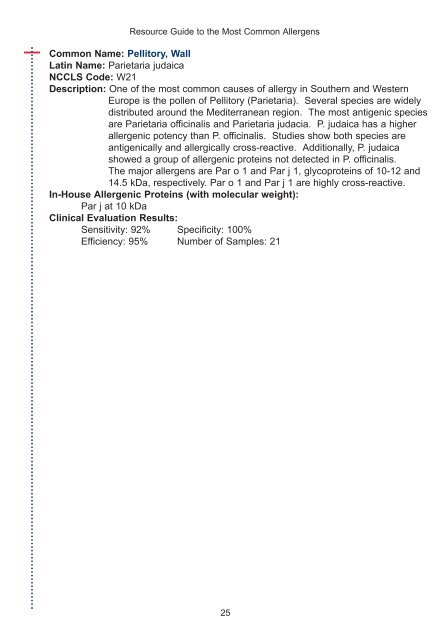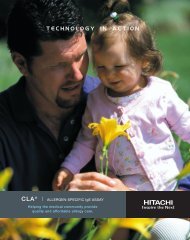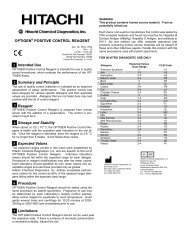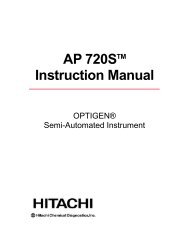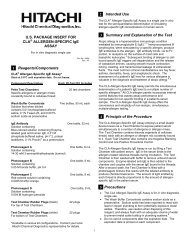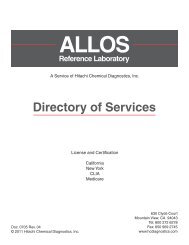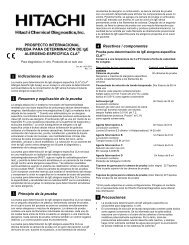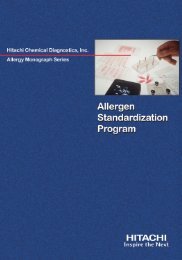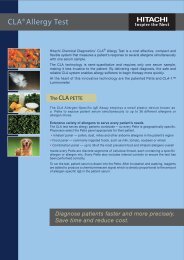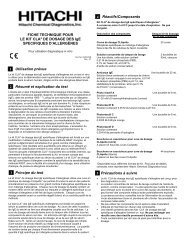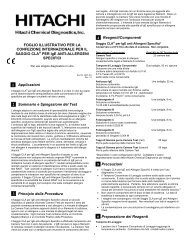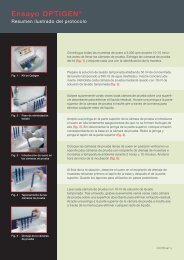Allergen Resource Guide - Hitachi Chemical Diagnostics
Allergen Resource Guide - Hitachi Chemical Diagnostics
Allergen Resource Guide - Hitachi Chemical Diagnostics
You also want an ePaper? Increase the reach of your titles
YUMPU automatically turns print PDFs into web optimized ePapers that Google loves.
<strong>Resource</strong> <strong>Guide</strong> to the Most Common <strong>Allergen</strong>s<br />
Common Name: Pellitory, Wall<br />
Latin Name: Parietaria judaica<br />
NCCLS Code: W21<br />
Description: One of the most common causes of allergy in Southern and Western<br />
Europe is the pollen of Pellitory (Parietaria). Several species are widely<br />
distributed around the Mediterranean region. The most antigenic species<br />
are Parietaria officinalis and Parietaria judacia. P. judaica has a higher<br />
allergenic potency than P. officinalis. Studies show both species are<br />
antigenically and allergically cross-reactive. Additionally, P. judaica<br />
showed a group of allergenic proteins not detected in P. officinalis.<br />
The major allergens are Par o 1 and Par j 1, glycoproteins of 10-12 and<br />
14.5 kDa, respectively. Par o 1 and Par j 1 are highly cross-reactive.<br />
In-House <strong>Allergen</strong>ic Proteins (with molecular weight):<br />
Par j at 10 kDa<br />
Clinical Evaluation Results:<br />
Sensitivity: 92% Specificity: 100%<br />
Efficiency: 95% Number of Samples: 21<br />
25


